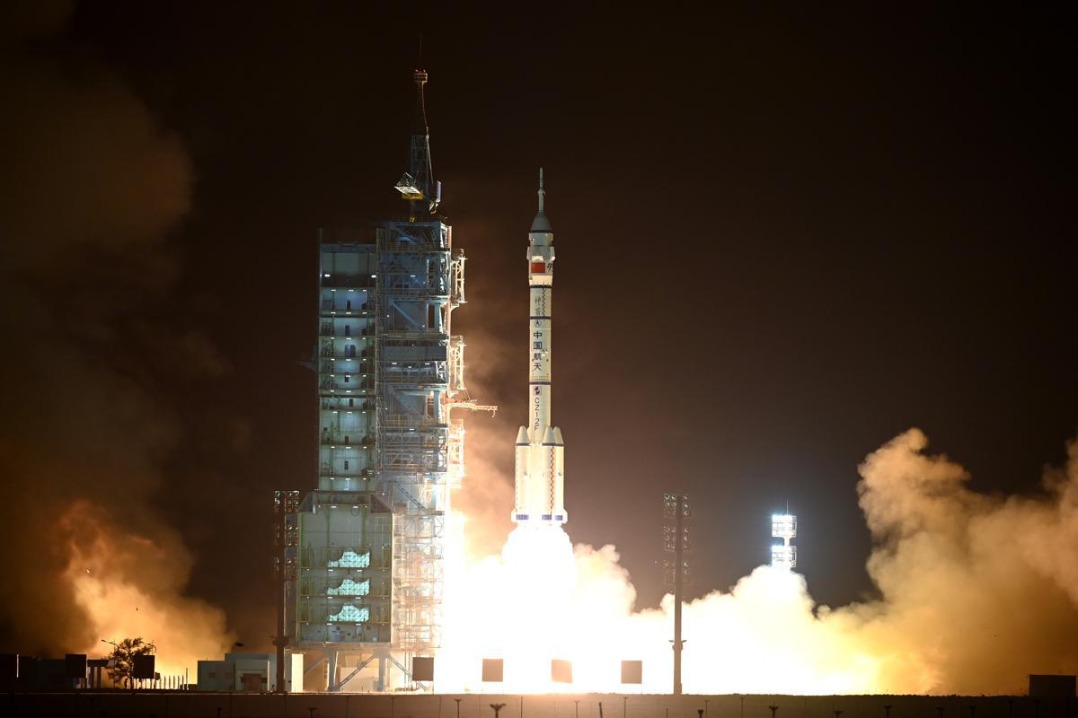Poor global outlook won't affect economy
By Mei Xinyu | China Daily | Updated: 2019-01-15 07:37

In terms of real economic performance, the year 2018 was "terrible" for the world. While it will take some time for the countries to publish their GDP, trade and other economic data for 2018, some major economies are expected to maintain positive growth. But the extremely volatile stock markets worldwide can be taken as a "barometer" of the world economy, and it shows that investors suffered huge losses.
Besides, the rise in primary commodities' prices, represented by oil in the first three quarters of 2018, has dealt a blow to consumers. In particular, because of the volatility of the stock markets-from China to the US to other major economies-the total market value loss last year could reach up to $20 trillion.
Stock market turmoil to hurt real economy
The FTSE All-World Index, which tracks thousands of stocks across markets, was down 12 percent last year-its worst performance since the 2008 subprime crisis which led to the global financial crisis-in stark contrast to the nearly 25 percent gain in 2017. The turmoil in the stock markets has not yet caused the GDP of major economies to shrink, but given the central role of finance in the modern economic system, a plummeting stock market will gradually start hurting the real economic sector.
Worse, as the world's two largest economies, China and the United States both saw a dip in their economic activity indexes in December.
China's Purchasing Managers' Index for the manufacturing sector averaged 50.9 percent last year, indicating overall growth of the sector for whole year. However, the PMI fell below 50 percent, the threshold between expansion and contraction, to 49.4 percent in December for the first time since July 2016. The US Dallas Fed Mfg Business Index, which assesses the Texas state factory activity, too, fell to minus 5.1 in December, the biggest drop since 2013.
Since the combined nominal GDP of the US and China accounted for 39.2 percent of the world total in 2017 and their contribution to global economic growth reached 57.6 percent in 2016, the cooling of economic activity in the two countries at the end of 2018 will inevitably affect other economies around the world.
Bearish mid-term outlook for 2019
In the face of cooling global trade and financial market volatility in 2018, especially in the second half of the year, international economic bodies and commercial financial institutions have successively lowered their forecast for world economic and trade growth for 2018 and 2019. And their outlook for medium-and long-term economic development is bearish. For example, Japan's Nomura Research Institute said the global economy has entered an irreversible downward path. In a mid-2018 report, the World Bank, too, said the world economy could be in a "dark decade" of low growth and high systemic risk starting from 2019.
So, is the world economy really headed for a period of low growth, even recession?
The poor global economic performance and stock market volatility in 2018 can be attributed to some intrinsic factors, such as the aftermath of quantitative easing and other abnormal monetary policies implemented by major central banks after the subprime crisis. But the rise of protectionism and a series of trade disputes the US has triggered against major economies, including China, have caused a lot of trouble for global trade.
Still, given that the US could suffer another financial crisis and its real economic sector could again plunge into depression, the global economic and trade outlook for this year is not optimistic. Especially, because despite facing a possible financial crisis, even depression, neither the US nor European countries, nor emerging market economies have taken countermeasures. Making matters worse are some political problems that pose a risk to the global economy this year and could even escalate into a crisis endangering peace and stability in the world.
US actions pose a risk to global economy
China and the US have reached a consensus not to impose higher tariffs on each other's imports for 90 days pending an outcome in bilateral trade negotiations. But due to the US' increasing protectionist inclination, it is still unclear whether the two countries can reach a long-term accord and prevent a trade war-not least because the US administration seems hell-bent on violating all existing agreements. The US is also creating trouble by refusing to approve new judges to the World Trade Organization's appellate body after its two judges' terms ends this year, which risks leaving the WTO essentially paralyzed.
More worryingly, some forces in the US are intent on pushing Sino-US relations toward confrontation. In a speech delivered at Hudson Institute on Oct 4, US Vice-President Mike Pence accused China of "meddling in America's democracy", and criticized China's "militarization" of disputed areas in the South and East China seas, and its practice of "debt diplomacy" in developing countries. Pence's remarks reminded one of the Cold War days.
And on Dec 31, Trump signed a bill proposed by some anti-Beijing senators that allows the US to sell more arms to Taiwan and encourage senior US officials to visit the island, casting a shadow on Sino-US relations as well as the situation across the Taiwan Straits.
China has consistently shown its sincerity and made maximum efforts to avoid the "Thucydides trap". But whether the US will respond in kind does not depend on China's efforts alone. The world economy faces a gloomy prospect, but that does not mean there is no hope of an upturn.
Stabilizing role in world economy
First, China's centralized and unified leadership has been adopting effective measures to stabilize growth, in order to boost the economy and prevent it from hitting the bottom. The past decade has shown that the Chinese economy is no longer just the "economic stabilizer" of East Asia; it is also a powerful "engine" driving the world economy. Based on the value of the dollar in 2015, China's contribution to world economic growth was 41.3 percent in 2016, compared with 16.3 percent of the US and 1.4 percent of Japan. Needless to say, the steady growth of China's contribution to global economic growth has played a stabilizing role in the world economy.
Second, the nearly 70 years of New China's history shows the country has the capacity to turn a crisis into an opportunity for further reform. In its 40 years of reform and opening-up, China has faced many external shocks-from the global debt crisis in the early 1980s and the 1997-98 East Asian financial crisis to the 2008 global financial crisis. And it has turned each one of those crises into an opportunity to raise its status in the international economic system.
Still, the unprecedented challenges facing the global multilateral trading system represented by the WTO may create new challenges for China's economic development. However, a series of preemptive measures that China has taken, such as the Belt and Road Initiative, is expected to offset the negative impacts of an external crisis on the Chinese economy and, instead, promote its further development through closer economic and infrastructure connectivity with a number of countries across the world.
The author is a researcher at the International Trade and Economic Cooperation Institute of the Ministry of Commerce.
























